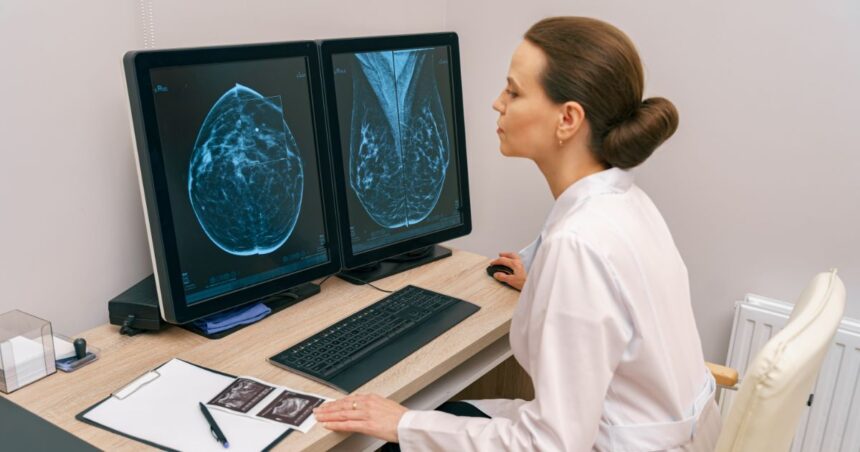If your mammogram shows abnormal results, it can be worrying, but it doesn’t necessarily mean you have cancer. There are many reasons mammogram results might be flagged as abnormal, most of which are not severe.
I want to help you understand what an abnormal mammogram means, what steps to take next, and how to navigate this situation calmly and confidently.
What Does an Abnormal Mammogram Mean?
An abnormal mammogram means that the radiologist found something that needs closer attention. It doesn’t always mean cancer, and often, it turns out to be something harmless, like dense breast tissue, cysts, or calcifications. Sometimes, the image might be unclear, and more detailed pictures are needed.
There are many reasons for an abnormal mammogram, and most aren’t serious. It could be:
- Dense Breast Tissue: Some women have dense tissue that can make it harder to see specific areas.
- Cysts or Lumps: Non-cancerous cysts are common and can appear on a mammogram.
- Calcium Deposits (Calcifications): These are tiny spots of calcium that are usually harmless.
Remember that additional tests are needed to understand what’s going on, and it’s important not to jump to conclusions until you have more information.
Steps to Take After an Abnormal Mammogram
If your mammogram returns with abnormal results, your healthcare provider will recommend follow-up steps. Here’s what you can expect:
1. Follow-up Imaging
Often, the first step is to get more imaging done. This could be another mammogram, called a diagnostic mammogram, or an ultrasound. These additional tests provide a clearer picture of the area that needs more attention. This helps the radiologist get a better look at anything that might have looked unusual in your first screening.
2. Meeting with Your Doctor
After the follow-up imaging, your doctor will review the results with you. They might explain what the images show and whether more tests are needed. If they see something that needs closer examination, they may recommend a biopsy.
3. Getting a Biopsy
A biopsy involves taking a small tissue sample from the area in question to look for any signs of cancer. The word “biopsy” can sound scary, but it’s important to remember that this is just a step to learn more. Many biopsies end up showing that the area is non-cancerous.
Common Feelings and How to Cope
It’s normal to feel mixed emotions when you receive abnormal mammogram results. You might feel anxious, scared, or confused. Here are some ways to help you cope:
- Talk to Someone: Sharing your feelings with friends or family can comfort you. It’s okay to express your worries.
- Stay Informed: Understanding the process and knowing what to expect can help reduce fear. Ask your doctor questions if you’re unsure about anything.
- Take Care of Yourself: Engage in activities that help you relax, like walking, reading, or meditation. It is important to keep your mind and body relaxed during this time.
What Are the Chances of Cancer?
Most abnormal mammograms do not lead to a cancer diagnosis. Many women who receive a follow-up test learn that everything is fine. Studies show that fewer than 1 in 10 women who are called back for additional imaging end up being diagnosed with breast cancer. The odds are on your side, but following up with any further tests your doctor recommends is crucial.
Final Thoughts
Receiving abnormal mammogram results can be a nerve-wracking experience, but it’s important to remember that it’s just the beginning of a process to gather more information. Most findings are non-cancerous, and the extra tests are simply to ensure everything is okay. Remember that your healthcare team is there to support you and guide you every step of the way.
If you or someone you know has received abnormal mammogram results, the best step is to stay calm, follow your doctor’s advice, and remember that you’re not alone in this journey.
Always ask questions, take care of your mental well-being, and trust the process. Your health and peace of mind matter; you deserve clear answers and compassionate care.

